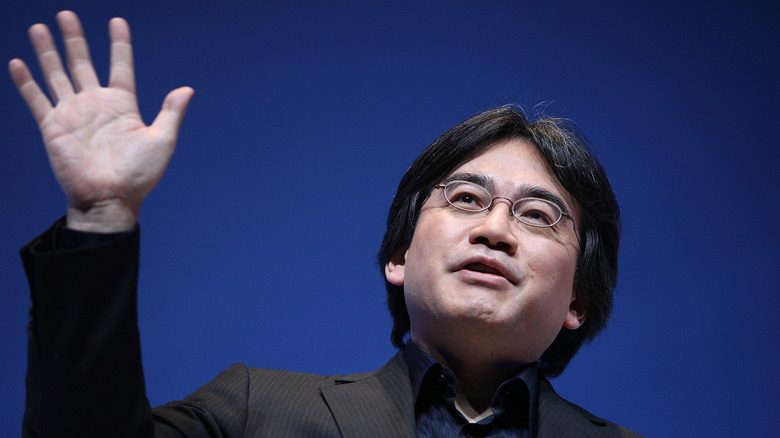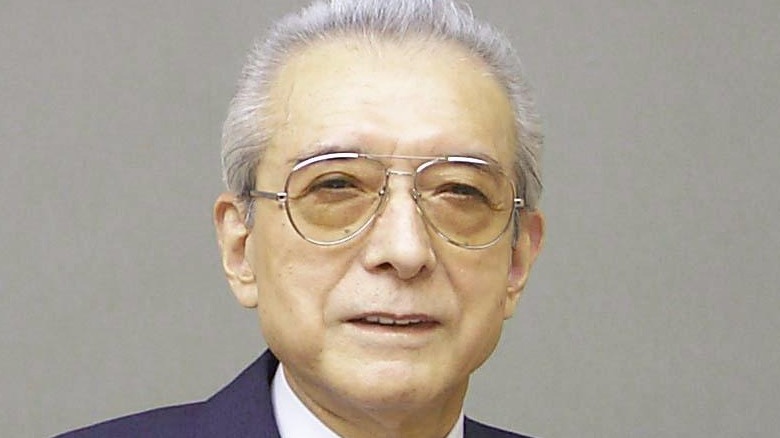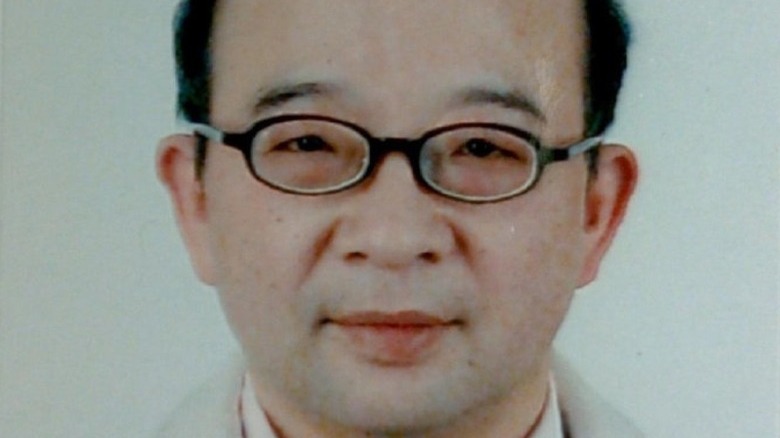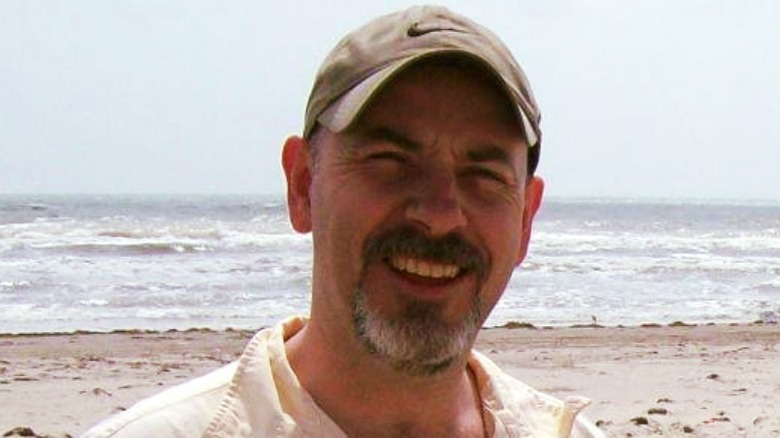Nintendo Legends You May Not Know Passed Away
The video game industry would be a very different place without Nintendo. Even when the company wasn't pioneering and developing video game genres and mechanics, it usually hosted huge titles on its various consoles. While most of these video game memories are immortal thanks to legions of dedicated game archivists, many of the people who created the games have passed on.
Nintendo has been around since the late 80s — the late 1880s, that is (via Business Insider), so it should come as no surprise that many Nintendo employees have passed away. But, that applies to the Nintendo employees who were with the company back when it just made playing cards. What about Nintendo game developers? Well, as detailed by the BBC, Nintendo swapped cards for cartridges in 1975, and many people have passed on in those 46 years. A number of Nintendo's first developers weren't young to begin with — and tragedy can strike at any time.
While quite a few first and third-party Nintendo game designers are still around, quite a few have passed away. Even if you don't recognize their names, their accomplishments (and occasional flops) should be all too familiar to most audiences.
Satoru Iwata
Satoru Iwata is a legend who needs no introduction to most gaming audiences. From 2002 to 2015, he served as Nintendo's President and CEO and led the company into a golden age. Under Iwata's leadership, Nintendo realized that gaming software trumped hardware, which resulted in blockbuster consoles such as the DS and Wii that sold on the quality of their games, not their graphics cards. Of course, Iwata didn't get where he was because Nintendo drew his name out of a hat. No, he earned his position.
When Iwata started his video game career, he began at HAL Laboratory and quickly migrated to Nintendo. He programmed iconic titles such as "Balloon Fight" and "Earthbound" before later serving as producer for franchises like "Kirby" and "Super Smash Bros." Iwata had his finger wedged in so many game development pies that he was credited for titles long after his death. The last game to feature Iwata as a posthumous executive producer was "Mario Kart 8 Deluxe," released nearly two years after his death.
According to a report from Rolling Stone, Iwata's death was the result of a prolonged battle with a bile duct tumor. In 2014, he was forced to miss an in-person appearance at E3 after physicians found the growth. He felt much better after surgery and even showed up in puppet form for Nintendo's 2015 E3 Digital Event. Iwata died several weeks later in July of 2015 at the age of 55.
Hiroshi Yamauchi
Before Satoru Iwata led Nintendo, Hiroshi Yamauchi was in charge. Yamauchi had some big shoes to fill ,since he was the great-grandson of the company's founder, Fusajiro Yamauchi — and also because Hiroshi inherited the position after his grandfather, Sekiryo Kaneda, suffered a stroke. Under Hiroshi, Nintendo metamorphosed from a playing card manufacturer to the video game company audiences know today. He had to carefully guide Nintendo's first releases to ensure the transition didn't blow up in its face.
During his tenure as President of Nintendo (and owner of the Seattle Mariners, according to Forbes), Hiroshi Yamauchi served as executive producer across four console generations. He is credited in titles such as "The Legend of Zelda," "F-Zero," "Donkey Kong," and "Mario Party." Yamauchi is also credited in later games like "Star Fox Adventures" and the international version of "Eternal Darkness: Sanity's Requiem."
Although Yamauchi stepped down as President of Nintendo in 2002, he stayed on the company's Board of Directors until 2005, when he retired. Surprisingly, he declined Nintendo's generous retirement pension, estimated in the ballpark of $9 -14 million, electing to siphon it back to the company, as he believed Nintendo could put it to better use.
On September 19, 2013, Yamauchi died of pneumonia. He was 85 years old.
Gunpei Yokoi
If you're a longtime Nintendo fan, odds are good that you owe your childhood gaming memories to Gunpei Yokoi. In fact, gamers who never touched a Nintendo console are also indebted to Yokoi, since he invented the D-pad. However, Yokoi is best known for the "Game & Watch" handheld, the insanely successful and portable Game Boy, and its antithesis in terms of lovability, the Virtual Boy. Yokoi was also more than just a hardware virtuoso.
Yokoi served as producer on a variety of titles, including "Metroid," "Kid Icarus," "Fire Emblem: Shadow Dragon and the Blade of Light," and "Super Metroid." While these games are key parts of his legacy, Yokoi has another claim to fame: introducing the world to Mario creator Shigeru Miyamoto. Yes, when Miyamoto was just a bright-eyed recruit, Yokoi showed him the ropes and supervised him. Together, they produced the seminal arcade classic "Donkey Kong."
Yokoi resigned from Nintendo in 1996 and died one year later in a tragic car accident. He was driving with an associate down the Hokuriku Expressway when he rear-ended the vehicle in front of him. Yokoi and his passenger were unharmed and exited the vehicle to assess the damage, but tragedy struck twice when a random car side-swiped them. While Yokoi's friend only suffered a broken rib, Yokoi was declared dead two hours later. He was 56 years old.
Hirō Isono
In the war between art style and graphical fidelity, art is often declared the victor. Since it's not always a good idea to rely on programmers alone to develop the look of a game, external artists are in high demand. It's not uncommon for studios to ask painters untrained in the art of video game design to help nail the look they're seeking. That's exactly how Squaresoft developed the signature aesthetic of its "Mana" franchise.
While producing the first true "Mana” game, "Secret of Mana," Squaresoft tapped semi-surrealist painter Hirō Isono. This decision was a no-brainer for the company; Isono's wheelhouse was drawing trees and forests, and the game's plot revolves around the Mana Tree, which serves as both the narrative's McGuffin and the protagonist's mother (don't ask).
Not only did Isono nail the look of the game and serve as its main visual artist, he also returned to fill other illustrator roles in subsequent "Mana" games, including "Trials of Mana" and the ill-fated "Children of Mana." Moreover, according to Anime News Network, Isono also drew illustrations for numerous novels and served as the primary illustrator for "Final Fantasy Adventure."
In May 2013, Isono passed away at the age of 68 due to heart failure.
Manabu Daishima
Map makers are arguably the unsung heroes of video game development. Creating in-game locales doesn't seem like the most glorious of positions, but there is an art to making digital topographies that entice gamers. The world could use more video game map makers, and a few years ago, gamers lost one of the most talented creators in the biz.
You've probably never heard of Manabu Daishima, but you've more than likely seen his work. Daishima was a longtime employee at Square Enix, having started working at the company back when it was known as Squaresoft. One of his first jobs was designing monsters in "Romancing SaGa," but he quickly found his home in the digital map making profession.
Daishima created the map graphics for "Secret of Mana" and the field graphics for "Chrono Trigger," and he stuck with Square when it transferred from Nintendo to Sony hardware. Daishima was also responsible for the field maps in "Final Fantasy 9" and "Final Fantasy 12." Due to his contributions to the series, he was credited in "Final Fantasy 12: The Zodiac Age," even though the game was released after his death.
According to Kotaku (which translated the original article from Mainichi Shimbun), Daishima was involved in a fatal diving accident off the coast of Japan in July 2016. He was 45 years old at the time of his death.
Dale DeSharone
While not every "Legend of Zelda" is created equal, you'd be hard-pressed to find an entirely hated entry. Even the infamous CD-i games have their fans, who appreciate them for their meme-ability. While some might cheer for their general lack of canonicity (via Nintendo Life), talented developers spent countless hours creating these games. Even the most capable developers can make a flop.
The most infamous (and memeable) of the CD-i "Zelda" games are "Link: The Faces of Evil" and "Zelda: The Wand of Gamelon," which were produced and designed by Dale DeSharone. And you can't chalk up those games' lack of quality to a lack of experience, since DeSharone previously developed several games.
The title that put him on the map was a point-and-click adventure called "Below the Root." Thankfully, DeSharone's tenure on the CD-i "Zelda" games didn't poison his reputation, since he also worked on "King's Quest 7" and served as executive producer for "Darkened Skye" — the world's only six-hour, teen-oriented commercial for Skittles.
The last game on DeSharone's resume was "Chris MoneyMaker's World Poker Championship," which released in 2005. He passed away in 2008 (per Nintendo Life), following a battle with leukemia.
Mark Haigh-Hutchinson
While most of Nintendo's studios make their home in Japan, several are dotted throughout the rest of the world. One of these famous Western Nintendo partners is Retro Studios. As noted by Polygon, Retro was born from the ashes of Iguana Entertainment (the company that broke the Nintendo 64's kid-friendly stigma with "Turok: Dinosaur Hunter" and "Turok 2: Seeds of Evil") and went on to create some of Nintendo's most memorable titles. A key mind behind the studio died far too young.
"Metroid: Prime" is the game that put Retro Studios on the map (partially because it was the company's first official title), and a crucial component to the game's success was Mark Haigh-Hutchinson. He served as senior engineer on all three entries, where he utilized much of his coding know-how. Haigh-Hutchinson's first stint on a Nintendo license was as a programmer for the hyper-difficult "Zombies Ate My Neighbors," after which he worked almost exclusively on sci-fi titles, specifically those that took place in a galaxy far, far away. "Star Wars: Dark Force," "Star Wars: Shadow of the Empire," "Star Wars: Rogue Squadron 3D," and "Star Wars: Episode 1 – Racer" all feature the programming fingerprints of Haigh-Hutchinson.
Unfortunately, Haigh-Hutchinson passed away long before Retro Studios started working on "Metroid Prime 4." In 2008, he died at the age of 43 after fighting valiantly against pancreatic cancer.
Kazuhisa Hashimoto
While "Demon's Souls" reignited the "all games should have an easy mode" argument, it was far from the spark that started that particular fire. Back in the early days of home video game consoles, developers often thought the only way to make a game last long was to make it difficult — they hadn't fully transitioned from the quarter-guzzling arcade cabinet mindset. The difficulties of some games were cranked so high that even developers offered a helping hand, which is how the Konami Code became legendary.
Up, up, down, down, left, right, left, right, B, A, start. That was the sequence of buttons Kazuhisa Hashimoto programmed into games to help ease the difficulty. While most gamers likely associate the code with "Contra," Hashimoto implemented it first into "Gradius," which he helped port from an existing arcade cabinet. Since the game was too hard for Hashimoto, he programmed the cheat into the NES version to help him finish — and while he intended to remove it in the completed version, that never happened.
Of course, Hashimoto had more than just "Contra" and "Gradius" to his name. He also worked on the arcade versions and NES ports of titles such as "Scramble" and "Super Cobra." Hashimoto was also system advisor for the Hideo Kojima classic "Snatcher."
As far as Nintendo legends go, Hashimoto died fairly recently. He passed away in 2020 at the age of 61 due to undisclosed causes.
Masato Masuda
Some game developers are genre chameleons — they are just as capable of developing a high-octane beat-em-up as they are of creating a tense survival horror. Others, such as Masato Masuda, develop a taste for one genre and rarely venture outside its borders.
One of the biggest wrestling game franchises, especially in Japan, is "Fire Pro Wrestling." The series, designed and programmed by Masuda, has been updated and ported to a variety of consoles, with its latest iteration available on the PlayStation 4. Even though Masuda eventually left the "Fire Pro Wrestling" franchise for different titles, he mostly stuck to his fighting/wrestling guns and programmed titles such as "Taekwon-Do." However, he did try his luck at other sports titles with "F1 Pole Position 2" and "Super Final Match Tennis."
Throughout Masuda's journey, he made many friends and even mentored some current gaming heroes. For example, Goichi Suda (a.k.a. Suda51, the guy who made "No More Heroes") credited Masuda as his "direct teacher." The two developers formed a friendship that lasted until Masuda's death, as Suda broke the news of Masuda's death on April 4, 2014. Masuda was 48 years old at the time.
Eric Medalle
You can't judge a book by its cover, but you can sell a game by one. Different countries have different tastes in game logos, so a design that catches eyes in Japan might not work in the United States, and not just because of the language barrier. So, a game company needs graphic designers to redesign logos to account for regional audiences. For a time, The Pokemon Company International employed a talented designer to do just that.
While Eric Medalle never provided input for the in-game graphics of a "Pokemon" game, he was responsible for the majority of the franchise's English logos since 2003. He served as graphic designer for mainline entries such as "Sun" and "Moon," as well as "Omega Ruby" and "Alpha Sapphire." He also created the logos for many "Pokemon" spin-offs, including "Pokemon Conquest," "Pokemon Picross," and the "Pokemon Rumble" line of games. Furthermore, you might have seen Medalle's work outside of video game box art, as he designed the covers for several strategy guides and guidebooks, and he also illustrated a few "Pokemon Trading Card Game" cards.
The death of Medalle can best be described as tragic. In 2016, he was driving his one-year-old daughter through a Seattle park when high winds caused a tree to fall on his car. Medalle was killed instantly, but his daughter survived mostly unscathed. Medalle was 42 at the time.
Andy O'Neil
It's not uncommon in the game industry for a designer to eventually leave a studio and find greener pastures in a competing company — or create their own studio. How fitting is it that a developer for some of Nintendo's best games would go on to found a company responsible for some of Sony's finest?
Andy O'Neil got his start working as a code monkey (no, seriously, that's what he was credited as) in titles such as "Mass Destruction," "Turok: Rage Wars," and "Turok 3: Shadow of Oblivion." However, it could be argued that he didn't truly shine until he joined Retro Studios and added his talent to the "Metroid Prime" franchise. O'Neil was responsible for much of the game's most integral coding, from general collision detection to weapon effects, and most important of all, CPU optimization.
After O'Neil finished his tenure with Nintendo, he started working for its main rival, Sony, by helping found Bluepoint Games. His first PlayStation project was helping program the "God of War Collection."
In 2019, the Bluepoint Games Facebook account announced that O'Neil had passed away due to undisclosed causes. The post credited O'Neil for pushing the company and helping it grow into what it is today. He was 47 years old.












